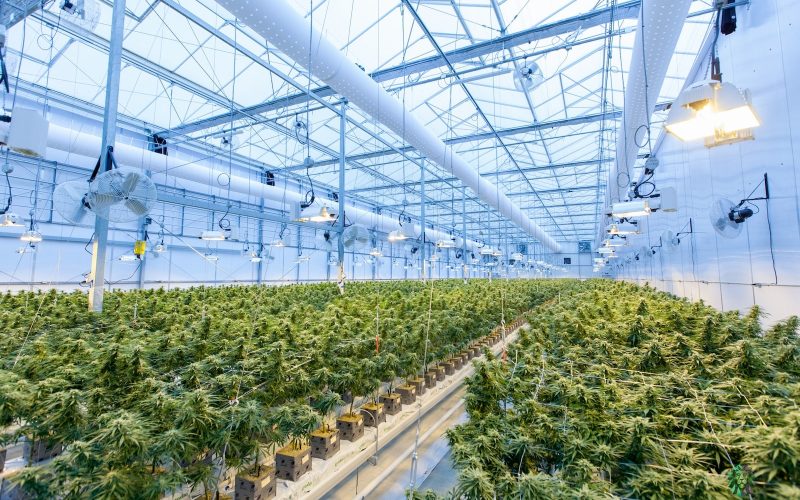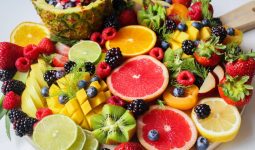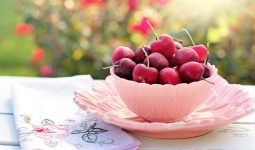When it comes to constructing or renovating your greenhouse, selecting the right type of plastic is crucial for creating an optimal growing environment.
The plastic covering of your greenhouse plays a significant role in regulating temperature, controlling light transmission, and protecting your plants from external elements.
In this section, we will explore the importance of plastic in greenhouses and the key factors to consider when choosing the ideal plastic for your specific needs.
Understanding the Importance of Plastic in Greenhouses
The plastic covering of your greenhouse serves as a barrier between the interior and exterior environments.
It helps to create a controlled microclimate that supports plant growth by trapping heat, maintaining desired humidity levels, and shielding plants from harsh weather conditions.
Plastic is popular for greenhouse coverings due to its transparency, durability, and cost-effectiveness.
It allows sunlight to penetrate, providing the necessary light energy for photosynthesis while preventing heat from escaping.
The type of plastic you choose will directly impact the efficiency, longevity, and overall performance of your greenhouse.
Factors to Consider When Selecting Plastic for Your Greenhouse
When deciding on the type of plastic to use for your greenhouse, several factors should be taken into consideration:
- Light Transmission: Different types of plastics have varying degrees of light transmission. The amount of light that can pass through the plastic affects the growth and development of your plants. Consider the light requirements of your crops and choose a plastic that provides optimal light transmission.
- Durability and Longevity: The durability and lifespan of the plastic covering are important factors, especially if you plan to use the greenhouse for an extended period. Assess the strength and resistance to tearing, UV degradation, and weathering of the plastic material.
- Insulation Properties: The insulation properties of the plastic influence the temperature regulation inside the greenhouse. Some plastics have higher insulation capabilities, which can help retain heat during colder months or provide shade during hotter months.
- Cost and Budget: Consider your budget and the cost-effectiveness of the plastic covering. Evaluate the upfront cost of the plastic material, as well as its maintenance requirements and potential replacement costs over time.
By carefully weighing these factors, you can make an informed decision when selecting the plastic for your greenhouse.
Remember to consider the specific needs of your plants, the climate in your area, and your long-term goals for the greenhouse.
In the following sections, we will explore different types of plastics commonly used in greenhouses, including polyethylene (PE) plastic, polyvinyl chloride (PVC) plastic, polycarbonate plastic, as well as other options such as acrylic and ethylene tetrafluoroethylene (ETFE) plastic.
Each type has its own unique properties, advantages, and disadvantages. Refer to the respective sections to learn more about each type and make an educated choice for your greenhouse.
Now that you understand the importance of plastic in greenhouses and the factors to consider when selecting the ideal plastic, let’s delve into the specifics of each type of plastic and their suitability for greenhouse applications.
Polyethylene (PE) Plastic
When it comes to selecting the ideal plastic for your greenhouse, polyethylene (PE) plastic is a popular and widely used option.
Let’s take a closer look at this type of plastic and explore its pros and cons for greenhouse applications.
Overview of Polyethylene (PE) Plastic
Polyethylene (PE) plastic is a versatile and cost-effective material that is commonly used in greenhouse construction.
It is available in various thicknesses and grades, allowing you to choose the right option based on your specific needs and budget.
PE plastic is known for its excellent light transmission properties, allowing ample sunlight to penetrate the greenhouse and promote plant growth.
This type of plastic is typically UV-stabilized to withstand prolonged exposure to the sun’s rays without degrading or becoming brittle.
Additionally, PE plastic is lightweight and flexible, making it easy to handle and install. It can be easily cut and shaped to fit the dimensions of your greenhouse structure.
The flexibility of PE plastic also allows it to withstand wind and other environmental factors without cracking or breaking.
Pros and Cons of Polyethylene (PE) Plastic for Greenhouses
Pros:
- Affordability: PE plastic is more cost-effective than other greenhouse covering materials.
- Light Transmission: PE plastic provides excellent light transmission, allowing plants to receive the necessary sunlight for photosynthesis.
- UV Stability: UV-stabilized PE plastic can withstand prolonged exposure to the sun without degrading or becoming brittle.
- Flexibility: PE plastic is flexible and can withstand wind and other environmental factors without cracking or breaking.
- Ease of Installation: PE plastic is lightweight and easy to handle, making installation straightforward.
Cons:
- Durability: While PE plastic is durable, it may have a shorter lifespan than other greenhouse covering materials, such as polycarbonate.
- Insulation: PE plastic may not provide the same level of insulation as other materials, which may impact temperature regulation in the greenhouse.
- Maintenance: PE plastic may require replacement or repairs over time to maintain its integrity and effectiveness.
When considering polyethylene (PE) plastic for your greenhouse, it’s important to weigh the pros and cons against your specific requirements and budget.
Remember also to consider factors such as light transmission, durability, insulation properties, and long-term maintenance.
If you’re interested in learning more about other plastic options for greenhouses, continue reading our article on Polyvinyl Chloride (PVC) Plastic.
For more information on greenhouse-related topics, check out our articles on what is a greenhouse and how does a greenhouse work.
Polyvinyl Chloride (PVC) Plastic
When it comes to selecting the ideal plastic for your greenhouse, Polyvinyl Chloride (PVC) is one option worth considering.
Due to its unique properties and benefits, PVC plastic is widely used in various applications, including greenhouse construction.
Overview of Polyvinyl Chloride (PVC) Plastic
PVC is a synthetic plastic polymer made from vinyl chloride monomers. It is known for its durability, versatility, and affordability.
PVC plastic is commonly used in greenhouse construction because it offers excellent weather resistance and can withstand harsh environmental conditions.
PVC plastic is available in different forms, including rigid PVC and flexible PVC.
Rigid PVC is often used for greenhouse frames, providing stability and structural support.
Flexible PVC, on the other hand, is commonly used for greenhouse coverings, such as greenhouse films or polytunnels.
These flexible PVC covers allow for easy installation and removal, making them a popular choice for both commercial and hobbyist greenhouse owners.
Pros and Cons of Polyvinyl Chloride (PVC) Plastic for Greenhouses
Pros:
- Affordability: PVC plastic is relatively inexpensive compared to other greenhouse plastic options, making it a cost-effective choice for greenhouse owners on a budget.
- Durability: PVC plastic is highly durable and resistant to cracking, chipping, and fading. It can withstand extreme temperatures, strong winds, and harsh weather conditions, providing long-lasting protection for your plants.
- Light Transmission: PVC greenhouse coverings allow a good amount of light to pass through, ensuring that your plants receive the necessary sunlight for healthy growth. However, it’s important to note that light transmission can vary depending on the specific PVC material used.
- Low Maintenance: PVC plastic is easy to clean and maintain. Regular cleaning with mild, soapy water can help remove dirt and debris, keeping your greenhouse looking clean and maintaining optimal light transmission.
Cons:
- Insulation: PVC plastic has lower insulation properties compared to other greenhouse plastics, such as polycarbonate. This means that additional measures may be needed to maintain consistent temperatures inside the greenhouse, especially in colder climates.
- Limited UV Stability: While PVC plastic is UV-stabilized to resist yellowing and degradation, it may have a shorter lifespan compared to other greenhouse plastics, such as polycarbonate or acrylic. UV exposure over time can cause PVC to become brittle and degrade.
- Environmental Considerations: PVC plastic is made from petroleum-based materials and is not considered environmentally friendly. It is not biodegradable and can release toxic substances when burned. However, efforts have been made to produce more eco-friendly alternatives to traditional PVC.
When considering PVC as the plastic material for your greenhouse, it’s important to weigh its pros and cons against your specific needs and priorities.
If affordability, durability, and easy installation are key factors for you, PVC plastic may be a suitable choice.
However, if you require higher insulation properties or have strict environmental considerations, you may want to explore other options, such as polycarbonate or acrylic plastic.
For more information on other plastic options for your greenhouse, check out our articles on polyethylene (PE) plastic and polycarbonate plastic.
Polycarbonate Plastic
When it comes to selecting the ideal plastic for your greenhouse, polycarbonate is a popular choice among greenhouse owners for its unique properties and benefits.
Let’s take a closer look at polycarbonate plastic and its pros and cons for greenhouse applications.
Overview of Polycarbonate Plastic
Polycarbonate is a thermoplastic material known for its exceptional strength and durability.
It is highly resistant to impact and can withstand harsh weather conditions, making it an excellent choice for greenhouse glazing.
Polycarbonate panels are available in various thicknesses, allowing you to choose the level of insulation and light transmission that best suits your needs.
One of the key advantages of polycarbonate plastic is its high light transmission.
It allows ample sunlight to enter the greenhouse, promoting optimal plant growth and photosynthesis.
The transparency of polycarbonate panels also provides a clear view of the plants inside the greenhouse, allowing you to monitor their progress.
Additionally, polycarbonate plastic offers excellent insulation properties.
It helps to retain heat inside the greenhouse during colder months, reducing the need for additional heating.
The insulation capabilities of polycarbonate can help create a stable and controlled environment for your plants, ensuring their well-being throughout the year.
Pros and Cons of Polycarbonate Plastic for Greenhouses
Pros:
- High light transmission for optimal plant growth.
- Excellent insulation properties for temperature regulation.
- Exceptional strength and durability.
- Resistant to impact, weather, and UV radiation.
- Lightweight and easy to install.
- Available in various thicknesses for customization.
Cons:
- Higher initial cost compared to other plastic options.
- It can expand and contract with temperature changes, requiring proper installation techniques.
- It may scratch more easily than some other plastics.
Despite the higher initial cost, the durability and longevity of polycarbonate plastic make it a worthwhile investment for greenhouse owners.
Its ability to provide ample light transmission, insulation, and resistance to impact makes it an ideal choice for creating a conducive environment for plant growth.
When choosing polycarbonate panels, consider the specific requirements of your greenhouse and the climatic conditions in your region.
Thicker panels offer increased insulation and durability, while thinner panels may be suitable for milder climates.
It’s important to balance your budget with the desired performance to find the right polycarbonate option for your greenhouse.
Remember to regularly clean and maintain your polycarbonate panels to ensure optimal light transmission and longevity.
Check out our article on how to clean greenhouse plastic for tips on keeping your greenhouse glazing in top condition.
By selecting polycarbonate plastic for your greenhouse, you can unleash its potential and create an environment where your plants can thrive.
Other Plastic Options
While polyethylene (PE), polyvinyl chloride (PVC), and polycarbonate are popular choices for greenhouse coverings, there are a few other plastic options worth considering: acrylic plastic and ethylene tetrafluoroethylene (ETFE) plastic.
Acrylic Plastic
Acrylic plastic, also known as polymethyl methacrylate (PMMA), is a transparent and lightweight plastic that offers excellent clarity.
It’s a popular choice for greenhouse applications because of its durability and resistance to UV radiation.
Acrylic plastic allows high light transmission, making it ideal for maximizing sunlight exposure to your plants.
One of the advantages of acrylic plastic is its high impact resistance, which helps prevent breakage during extreme weather conditions.
However, it may not provide the same level of insulation as other plastics, such as polycarbonate.
Therefore, if you live in an area with fluctuating temperatures, you may need to consider additional insulation options.
| Pros | Cons |
|---|---|
| High light transmission | May not provide optimal insulation |
| Durable and resistant to UV radiation | Less impact resistance compared to polycarbonate |
| Lightweight | |
| Excellent clarity |
Ethylene Tetrafluoroethylene (ETFE) Plastic
ETFE plastic is a relatively new and innovative choice for greenhouse coverings.
It is a fluoropolymer that offers exceptional light transmission comparable to glass.
ETFE plastic is known for its high tensile strength and resistance to chemical degradation, making it suitable for long-term use in outdoor applications.
One of the significant advantages of ETFE plastic is its self-cleaning properties.
Its smooth surface prevents dirt and debris from adhering, reducing the need for frequent cleaning.
Additionally, ETFE plastic is highly transparent to both visible and UV light, allowing optimal light penetration for plant growth.
| Pros | Cons |
|---|---|
| Excellent light transmission | Higher cost compared to other plastics |
| High tensile strength | Requires professional installation |
| Self-cleaning properties | |
| Resistant to chemical degradation |
When considering acrylic plastic or ETFE plastic for your greenhouse, evaluating your specific needs is important.
Consider factors such as light transmission, durability, insulation properties, and budget.
Keep in mind that each plastic option has its own set of advantages and limitations.
For more information on choosing the right plastic for your greenhouse, refer to our article on choosing the right one.
Factors to Consider When Choosing Plastic
When it comes to selecting the ideal plastic for your greenhouse, there are several important factors to consider.
Each factor plays a significant role in your greenhouse’s overall performance and longevity.
Here are some key considerations to keep in mind:
Light Transmission
Light transmission is a critical factor to consider when choosing plastic for your greenhouse.
The amount of light that can pass through the plastic material directly affects the growth and development of your plants.
Different plastics have varying light transmission properties, so it’s important to select one that matches the needs of your plants.
For example, polycarbonate plastic offers high light transmission, while polyethylene plastic may have slightly lower light transmission but can still provide sufficient light for most plants.
To make an informed decision, comparing the light transmission percentages of different plastic options is helpful.
Here’s a table that showcases the approximate light transmission values for common greenhouse plastics:
| Plastic Type | Light Transmission (%) |
|---|---|
| Polycarbonate | 80 – 90 |
| Polyethylene | 80 – 90 |
| Polyvinyl Chloride (PVC) | 70 – 80 |
| Acrylic | 90 – 92 |
| Ethylene Tetrafluoroethylene (ETFE) | 90 – 95 |
Durability and Longevity
The durability and longevity of the plastic material used in your greenhouse are important considerations, as they directly impact the maintenance and replacement costs over time.
Opting for a plastic that is resistant to UV degradation and can withstand outdoor conditions is essential.
Polycarbonate plastic, for example, is known for its exceptional durability and ability to withstand harsh weather conditions without yellowing or becoming brittle.
On the other hand, polyethylene plastic may have a shorter lifespan and may require more frequent replacement.
Insulation Properties
Another factor to consider is the insulation properties of the plastic.
Insulation helps regulate the temperature inside the greenhouse, preventing extreme heat or cold from affecting your plants.
Some plastics, like polycarbonate, offer excellent insulation properties, helping to retain heat during colder months and providing insulation against excessive heat during warmer months.
Consider your region’s climate and your plants’ specific needs when selecting a plastic with suitable insulation properties.
Cost and Budget
Lastly, cost and budget considerations are important when choosing plastic for your greenhouse.
The price of the plastic material can vary depending on the type and quality.
While some plastics may be more affordable initially, they may have a shorter lifespan and require more frequent replacement.
It’s important to find a balance between cost and durability to ensure the best long-term value for your investment.
By considering factors such as light transmission, durability and longevity, insulation properties, and cost, you can make an informed decision when selecting the ideal plastic for your greenhouse.
Remember to assess the specific needs of your plants, the climate in your region, and your budget to find the perfect fit for your greenhouse project.








